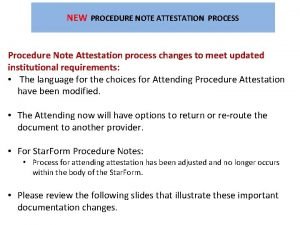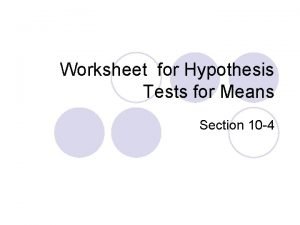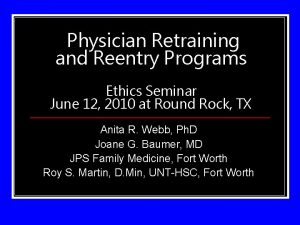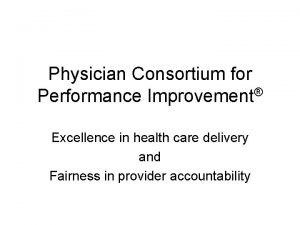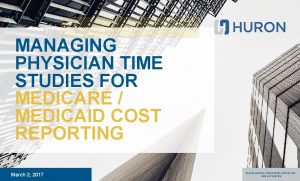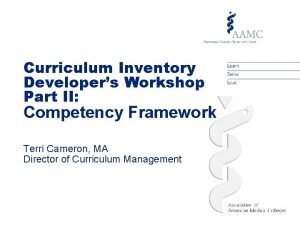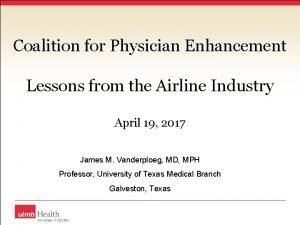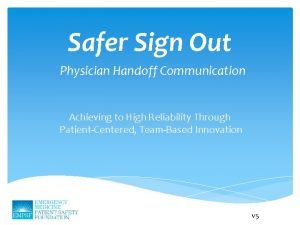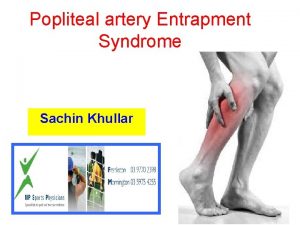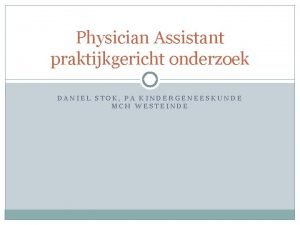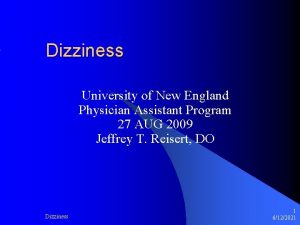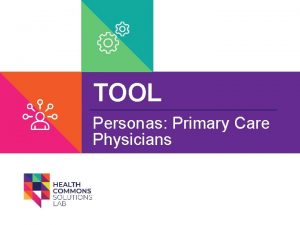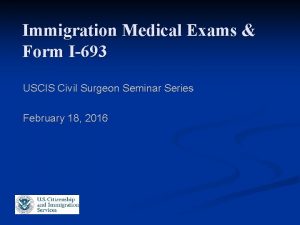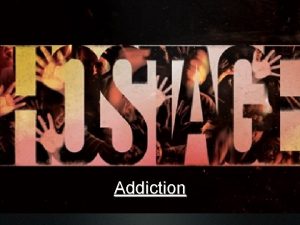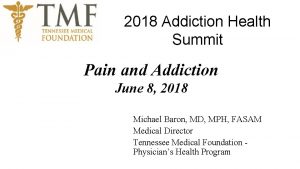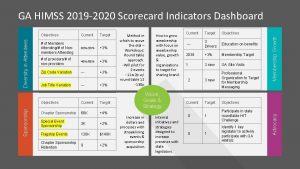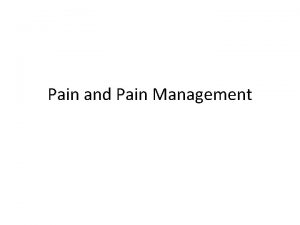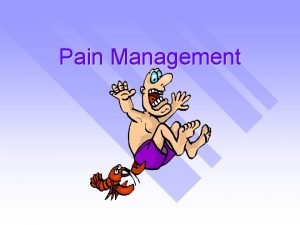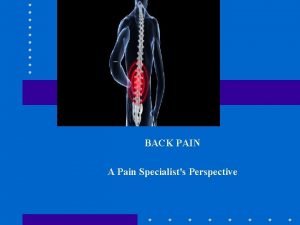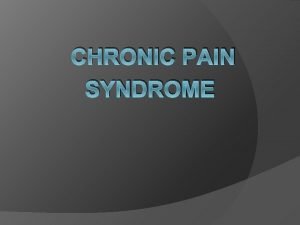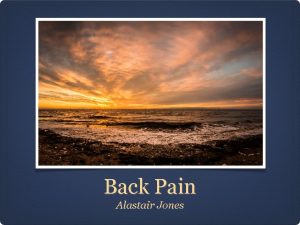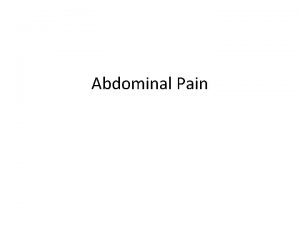PAIN AND ADDICTION Steven Rapaport MD Attending Physician































- Slides: 31

PAIN AND ADDICTION Steven Rapaport, MD Attending Physician Comprehensive HIV Center Saint Vincent’s Catholic Medical Center A Local Performance Site of the NY/NJ AIDS Education and Training Center New York City Medical Director West Midtown Medical Group New York City

Case Alex is a 44 year old man having difficulty with pain medications He has AIDS CD 4 nadir 75 several years ago Currently on Kaletra and Combivir Recent CD 4 325 Viral Load <50 Also has hepatitis C infection with documented viremia (type 1 A) and mild elevation in AST and ALT Pain problem: avascular necrosis of left hip for several years, requiring opioid analgesics

Initially treated with percocet, up to 8 tablets daily Switched to MS Contin due to concern over tylenol exposure Eventually stabilized on MS Contin 30 mg twice daily and hydromorphone (dilaudid) 2 mg to 4 mg every 4 hours for break-though pain S/P total hip replacement 6 months ago After hospital discharge, he was given Rx for percocet by orthopedist

He is currently taking 8 percocets daily His primary provider has tried unsuccessfully to discontinue the percocets He no longer has hip pain, but he complains of irritability, malaise, insomnia, generalized body pain, abdominal cramping, diarrhea, sweats and chills when he doesn’t take them Both the patient and his primary provider are concerned that he has developed an addiction to pain medications What is your assessment?

PHYSICAL DEPENDENCE A state of adaptation characterized by a class specific drug withdrawal syndrome that can be produced by the abrupt cessation, rapid dose reduction, decreasing blood level of the drug, or administration of an antagonist A predictable drug effect Consensus statement of the American Pain Society, American Academy of Pain Medicine, and the American Society of Addiction Medicine (2001)

ADDICTION A primary, chronic condition characterized by: Impaired control over drug use, compulsive use Craving, preoccupation with obtaining and using the drug Continued use despite harm (physical, psychologic, social) Consensus statement of the American Pain Society, American Academy of Pain Medicine, and the American Society of Addiction Medicine (2001)

DSM-IV CRITERIA NOT WELL SUITED FOR PAIN PATIENTS SUBSTANCE DEPENDENCE DISORDER (three or more) Larger amounts used for longer time than intended Persistent desire or unsuccessful attempts to control use Great deal of time spent in activities related to use Important social, occupational, or recreational activities given up or reduced due to substance use Continued use despite problems caused or exacerbated by use Tolerance Withdrawal (physical dependence)

KEY QUESTIONS: What percentage of patients treated with opioids for chronic pain will develop an addiction disorder? Are there risk factors for the development of addictions? How can you tell if the patient is developing an addiction disorder?

“MALIGNANT” VS. “NON-MALIGNANT” Concerns about addiction are usually irrelevant in palliative care at the end of life Nonetheless, fear of addiction contributes to unnecessary pain and suffering, even at the end of life. Fear of regulatory scrutiny inhibits appropriate prescribing by physicians, even at the end of life. On the other hand, opioid analgesic therapy for chronic non-malignant pain should involve a careful assessment of benefits and risks, including addiction.

PAIN AND AIDS Late stage AIDS is often associated with pain Before the advent of HAART, AIDS was always a terminal disease, similar to incurable cancer Chronic pain in the HIV/AIDS in the post-HAART era is more often similar to other non-malignant pain conditions (chronic back pain, arthritis) and the use of opioid analgesics should involve a careful risk-benefit analysis

PAIN AND ADDICTION What percentage of patients treated with opioids for chronic pain will develop addiction? Pain specialist have reported that addiction is a rare occurrence among chronic pain patients Published rates of addiction in chronic pain populations § 3% to 18%

PAIN AND ADDICTION On the other hand… Rates of addiction problems in the general US population: Alcoholism: 10% Drug abuse: 5% Many patients with opiate addiction (up to 25% in some surveys), report that their addiction resulted from prescribed opioid analgesics.

PAIN AND ADDICTION In retrospective analyses, nearly all chronic pain patients who developed problems with opioid use had a prior history of addiction. However, prospective longitudinal studies, in well-characterized patient populations, are lacking

RISK FACTORS FOR ADDICTION (not evidence-based) Prior history of addiction Family history of addiction Co-occurring psychiatric disorders Use of short-acting opioids which are more “reinforcing” than long-acting opioids

CASE: Used drugs extensively in the 1980’s and 1990’s, especially cocaine, crystal methamphetamine, alcohol, and Marijuana, while working in the fashion industry, where drug use was very common. He injected heroin several times in college, but “didn’t really like it” He lost several jobs due to inability to control his drug use. Attended detox and rehab in 1996 after a suicide attempt. He continues to drink alcohol on weekends, up to 4 to 5 drinks per night, despite having been told that he should stop because of his hepatitis C infection. Denies other drugs since leaving the rehab.

FAMILY HISTORY: His father was an alcoholic, died of cirrhosis. His brother was addicted to heroin, now in a methadone program. MENTAL HEALTH: He has a history of depression in past, which was associated with periods of drug use. He is not currently depressed and is on effexor.

CASE Alex is concerned that he is having difficulty getting off the pain medications, but he: Denies craving for the pain medications Has a half-full bottle of percocet at home and left-over MS Contin from an old prescription. Never takes them for a euphoric effect or for any other effects other than to eliminate the withdrawal symptoms. What is your assessment?

SIGNS OF ADDICTION IN PATIENTS: “ABERRANT BEHAVIORS” Lost or stolen Rx Escalating doses, early renewals Obtaining medication form other sources Use of pain medications for psychic effects, e. g. to relieve anxiety, increase energy, or for euphoria Unwillingness to try non-opioid mediations Deterioration in function

ADDICTION IN PATIENTS: Impaired control, compulsive use Craving, preoccupation Continued use despite harm, which leads to deterioration in function

PSEUDOADDICTION Behaviors that resemble addiction that occur when pain is under-treated. “Watching the clock” for pain medications in hospital “Drug seeking” and “doctor shopping” Asking for specific medications by name Hoarding of medications Unsanctioned escalation in dose These behaviors resolve when the pain is adequately treated.

CASE: In order to treat opioid withdrawal, Alex received a long acting opioid which slowly tapered off over the course of several weeks. He completed the taper without any complications and did not display any aberrant behaviors. Despite being advised to abstain completely from alcohol and cigarettes, he continues to drink and smoke as before.

CASE: version #2 The surgery was unsuccessful and he continues to have severe pain How should his pain be managed?

PAIN AND ADDICTION Chronic pain is very common among patients with addictions disorders trauma medical illness Chronic opioid use, e. g. methadone maintenance, may lead to increased sensitivity to pain (hyperalgesia)

PAIN AND ADDICTION Should you prescribe opioid analgesics for patients with addiction disorders? Regulatory issues (will you get in trouble with the DEA? ) Clinical issues (is it good medicine? )

PAIN AND ADDICTION REGULATORY ISSUES The use of opioids to treat opioid addiction is limited to federally approved Opioid Treatment Programs (Narcotic Drug Treatment Act of 1974) and is monitored by the DEA and State authorities Office-based treatment of opioid addiction with buprenorphine is allowed under the Drug Addiction Treatment Act of 2000 Physicians may prescribe opioids to addicts for pain, as long as the chart clearly documents that the opioids are being used to treat pain and not addiction

DIVERSION The diversion of prescribed controlled substances for other than legitimate medical uses poses a threat to the individual and society. Prescribers have a responsibility to minimize the potential for the abuse and diversion of controlled substances, but efforts to stop diversion should not interfere with the legitimate use of opioids for pain management. from Model Policy on Controlled Substances for Treatment of Pain: Federation of State Medical Boards (2004)

PATIENT EVALUATION Complete history and physical Detailed pain history, physical exam, prior treatment history, indications for opioid analgesic (under accepted medical standard of care) History of substance abuse Psychiatric history Communicate with prior clinicians, obtain prior records

INFORMED CONSENT Discussion of risks and benefits Consider use of a written agreement

INFORMED CONSENT WRITTEN AGREEMENT One prescriber One pharmacy Patient agrees to safeguard medication No replacement of lost or stolen medication No illegal substances No diversion (selling, sharing) Urine toxicology testing

PERIODIC REVIEW Analgesic response Aberrant behaviors, signs of addiction or diversion Functional status: patients on effective analgesia should have improved function; patients with addiction disorders will get worse Do the benefits of opioid analgesics continue to outweigh any risks?

Documentation Chart everything!
 William j. rapaport
William j. rapaport Ivan rapaport
Ivan rapaport David lewis mad pain and martian pain
David lewis mad pain and martian pain How do you know if your period is coming or your pregnant
How do you know if your period is coming or your pregnant Early pregnancy symptoms cramps
Early pregnancy symptoms cramps Thank you for attending open house
Thank you for attending open house Attending vs resident
Attending vs resident Attending responding personalizing initiating
Attending responding personalizing initiating Erf deped requirements
Erf deped requirements Attending attestation
Attending attestation Why is attending school important
Why is attending school important Presciber segmentation
Presciber segmentation Provider engagement
Provider engagement A physician claims that joggers maximum volume
A physician claims that joggers maximum volume Physician reentry program
Physician reentry program Physician consortium for performance improvement
Physician consortium for performance improvement Physician time study
Physician time study Physician competency reference set
Physician competency reference set Coalition for physician enhancement
Coalition for physician enhancement Physician associate lecturer
Physician associate lecturer Safer sign out
Safer sign out Www.elishagoodman.org
Www.elishagoodman.org Colorado physicians health program
Colorado physicians health program Physician burnout retreat
Physician burnout retreat Physician employment models
Physician employment models Dr. sachin khullar
Dr. sachin khullar Daniel stok
Daniel stok Family medicine procedures
Family medicine procedures University of new england physician assistant program
University of new england physician assistant program Physician personas
Physician personas Uscis civil surgeon locator
Uscis civil surgeon locator Informative model in doctor-patient relationship
Informative model in doctor-patient relationship









